by bria4123 on January 14, 2012
Why are Indian temples much more ornate than Egyptian pyramids? We saw some reasons in yesterday’s post. But a cultural landscape has more than just a few dimensions, and there’s no culture that’s vaster than India’s.
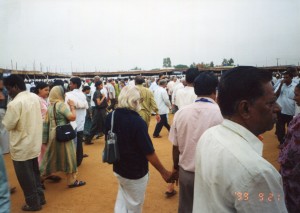
Ancient India’s political map was as bewilderingly large as her spiritual landscape. Both domains went hand-in-hand in shaping Indian thought and art. Washington D.C.’s chaos has nothing on ancient India’s. [click to continue…]
by bria4123 on January 13, 2012
Some of my posts in the last month have been building towards the pyramids at Giza. But before we get there, let’s hang a wide right from the Nile.
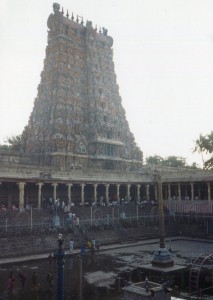
The Meenakshi Temple in Madurai (above) sports several towers (gopuras), and its highest rises to 171 feet.
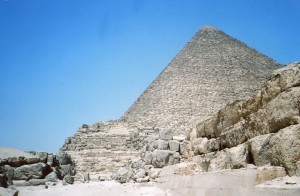
But Madurai’s Meenakshi Temple seems the oppsite of Great Pyramid’s simple geometry. Both monuments emerged in different cultural landscapes. [click to continue…]
by bria4123 on January 12, 2012
One more ingredient helped unify Egypt. Hieroglyphs! They still enchant people all over the world.
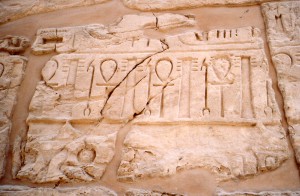
Sumeria (an equally ancient civilization, in modern Iraq) also created a writing system, but Egypt’s has a magic that still captivates people. What is it? [click to continue…]
by bria4123 on January 10, 2012
Ancient Egyptians did a lot of little things as they built the great pyramids.
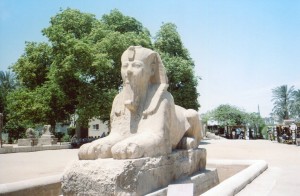
They’re not as dramatic, but they have had as much influence on Western and Islamic cultures. [click to continue…]
by bria4123 on January 10, 2012
Anient Egypt was more than pyramids. I found the little things under the surface as impressive.
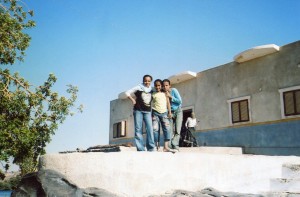
By the time kings were building the great pyramids around 2600 BCE, artists painted people in families showing each other affection. Husbands and wives drape an elegant arm around each other and look forward with contented expressions. And no DVD and potato chips! People did like their beer though. Children sometimes hold their parents’ legs.
This is 2600 BCE–twice as old as the earliest humanistic art of some of the other great civilizations. Minoans fashioned images that were as life-affirming around 1500 BCE, but they were influenced by Egypt. After their world collapsed, Greeks didn’t attain comparable levels of humanity in their art until the Homeric texts were composed, from 800 to 650 BCE. Why was Egypt special in this regard? [click to continue…]
by bria4123 on January 7, 2012
Banteay Srei may be the most beautiful Khmer temple, but Ta Keo is one of the stateliest. They’re two of the Khmers’ most influential buildings, yet their personalities contrast.
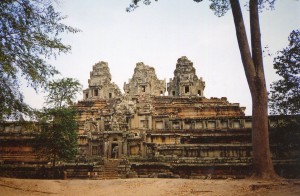
Ta Keo was begun and completed in two very different political climates, and this might have helped form its character. [click to continue…]
by bria4123 on January 6, 2012
In this final post on Banteay Srei, we’ll examine some of this temple’s deepest meanings.
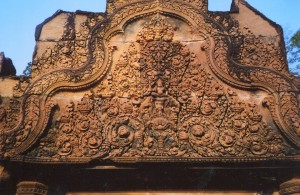
As you approach Banteay Srei from the east on its causeway, you come to this carving over the gate. Indra is driving his BMW. At least it was Indian mythology’s version of what many Indians meditate on today. But in ancient India, Indra and the elephant were both associated with rain that came with the monsoon. The Khmers carved several images of Indra on his mount at Banteay Srei. The dense garlands around Indra look like animated clouds, as though this carving will bring the rains with sympathetic magic. I don’t know about about the monsoons, but it sure helps attract Korean tour buses.
But this image only hints at what’s on the other side of the gate. [click to continue…]
by bria4123 on January 5, 2012
So what’s the fuss about? Why do tour buses deposit more camera toting sightseers than fish trapped on Lake Tonle Sap’s shore when the water recedes?
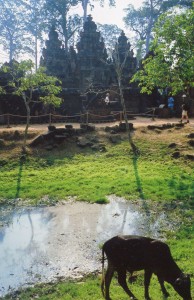
In the prior post on Banteay Srei, we saw some of its uniquely beautiful style. We’ll now enter it more deeply and explore some if its inner mysteries. [click to continue…]
by bria4123 on January 3, 2012
Angkor Wat awes, but Banteay Srei wins hearts. Many visitors to Angkor say that Banteay Srei is their favorite Khmer temple. It might bring out your inner child.
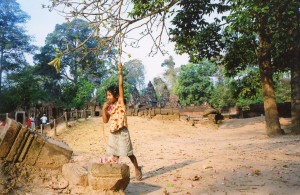
Banteay Srei was built late in the reign of Rajendravarman II, by one of his officials. Rajendravarman had been extending the Khmer Empire, and he punctuated his authority with a grand temple called Pre Rup. Now that the Khmer Empire had a strong backbone, its kings and officials could experiment with new ideas and art forms. One of Angkor’s most creative periods followed. [click to continue…]
by bria4123 on January 2, 2012
King Rajendravarman II restored the Khmer Empire’s glory. Jayavarman IV had moved his capital 90 miles northeast to Koh Ker. A succession crisis followed his death, until one of his sons, Harshavarman II, took the throne. But he died a few years later. Rajendravarman, his cousin, succeeded him. After this turmoil, the Khmers needed a strong king who could unify them.
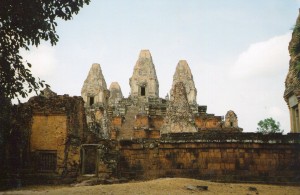
Rajendravarman delivered in spades (or better, barays). He brought the capital back to Angkor, extended the empire, and built some of the Khmers’ greatest pre-Angkor Wat monuments. I explored Pre Rup after going through Angkor Wat several times, and still found it impressive. [click to continue…]











